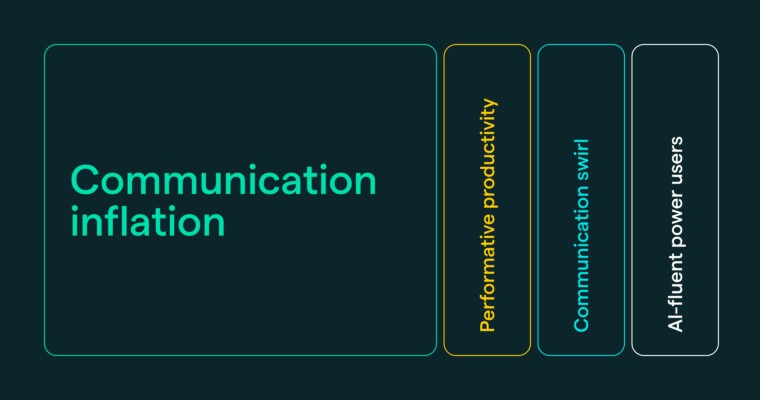As part of our Two Truths and AI series, Grammarly hosted an intimate gathering of IT leaders for a candid conversation on productivity, AI, and the future of work. Led by Dean Macris, CISO at Dispel, and Luke Behnke, Vice President of Enterprise Product Management at Grammarly, the conversation explored one of today’s most pressing questions: how do we thoughtfully and effectively adopt AI tools to drive real productivity, deliver meaningful outcomes, and empower the people who power our organizations?
As AI and digital tools rapidly multiply, it’s clear that organizations are feeling the pressure to keep up while maintaining security, trust, and a sense of identity for their teams. This frank conversation dug into the messy middle of this transition, offering practical insights from leaders in the thick of it.
5 takeaways for IT leaders
1. Start with people, not tools
“If you have a tool, and you’re trying to measure how to increase people’s productivity, start with people.”
As organizations integrate AI into their tech stacks, leaders must understand how new tools fit into real workflows and employee behavior. AI adoption may begin as a technical initiative, but making it successful is a uniquely human endeavor. It requires organizational buy-in, intuitive tools, and a willingness from teams to grow and adapt. Leaders need to consider team dynamics, how team members work best, and where bottlenecks or frustrations exist today.
IT leaders offer a unique perspective on people, process, and technology that can help their organizations meaningfully integrate AI to streamline low-level, time-consuming tasks while amplifying human impact on higher-order tasks. Part of the challenge organizations face on their path to AI adoption is having a clear understanding of what people and AI each do best. When there is misalignment, teams run the risk of outsourcing the wrong work to AI. This is why IT leadership’s role doesn’t end at implementation—it must extend to ensuring that AI enhances core priorities while aligning with the foundational behaviors of the workforce.
2. Not everything that counts can be easily counted
“Things that are easy to measure are often not important, and things that are important are usually not easy to measure.”
When it comes to productivity, companies often fall into the trap of tracking what’s easiest—mouse movement, login time, or email response rates—while ignoring deeper, more valuable indicators like impact, innovation, and employee engagement. This has spawned a new workplace phenomenon Grammarly has coined “performative productivity” in its latest annual report. This is where employees spend time on activities that appear to be productive but don’t drive meaningful outcomes.
Instead of defaulting to shallow measures of success, organizations need to define the metrics that matter to their business. Unlike performative metrics, these will sound more like cost reduction, customer engagement, or employee experience. These often can’t be measured with a single data point but rather require a combination of metrics that together connect the dots across employee productivity, quality of output, and business outcomes.
Read more: The CIO Playbook: Measuring the ROI of AI
3. Shadow AI—with guardrails—drives signal in the noise
“We’re seeing tools emerge from the ground up… Shadow AI gives us insight into what’s actually working for people.”
The rise of “shadow AI”—tools that employees bring into their own workflows without formal IT approval—can feel risky, but it’s also a signal. The AI tools employees use—often paid for out of their own pockets—reveal which solutions are intuitive, helpful, and meet real needs. Rather than shutting these down outright, leaders can study them, learn from usage patterns, and consider how they might inform a more coherent AI strategy with appropriate guardrails. This bottom-up experimentation can help organizations better understand which tools and use cases are driving value.
Dive deeper: Making Sense of 2025 AI Trends Webinar (Jump to the 17:00 mark!)
4. ROI must be a two-way street
“Vendors need to provide more transparent metrics… Otherwise, how can we defend the spend?”
When organizations invest in AI tools, they need evidence of impact—better workflows, clearer communication, time saved, etc. Today, the customer bears most of the onus for proving the return on their AI investments. It is important for each organization to design its own AI measurement framework to align impact with predetermined business outcomes; however, companies should also hold their vendors to a higher standard for providing mechanisms to measure the impact of AI tools. Without clear AI benchmarks, it’s difficult for IT leaders to advocate for budgets or strategic expansion. The call is clear: vendors must step up and share actionable metrics, or risk being deprioritized in a crowded tool landscape.
5. Imagination is the next competitive edge
“We need to move from a knowledge-based economy to an imagination-based one.”
The future of work isn’t just about knowing things—it’s about dreaming up better ways to do them. AI can (and should) free up time and mental energy, enabling employees to focus on meaningful work and envision the innovations that will transform their organizations. When people are passionate and empowered, they produce better work—and that’s the real endgame for productivity. The shift toward imagination-led work means investing in tools and processes that enhance creativity, reduce cognitive overload, and empower employees to think boldly about what’s possible.
This conversation reminded us that we’re still early in the AI adoption curve, but we’re learning fast. The promise of AI isn’t just efficiency—it’s inspiration, empowerment, and evolution. By focusing on people, grounding our strategies in thoughtful metrics, and embracing experimentation, we can create workplaces that not only boost productivity but also elevate employee experience, customer value, and long-term business success.



